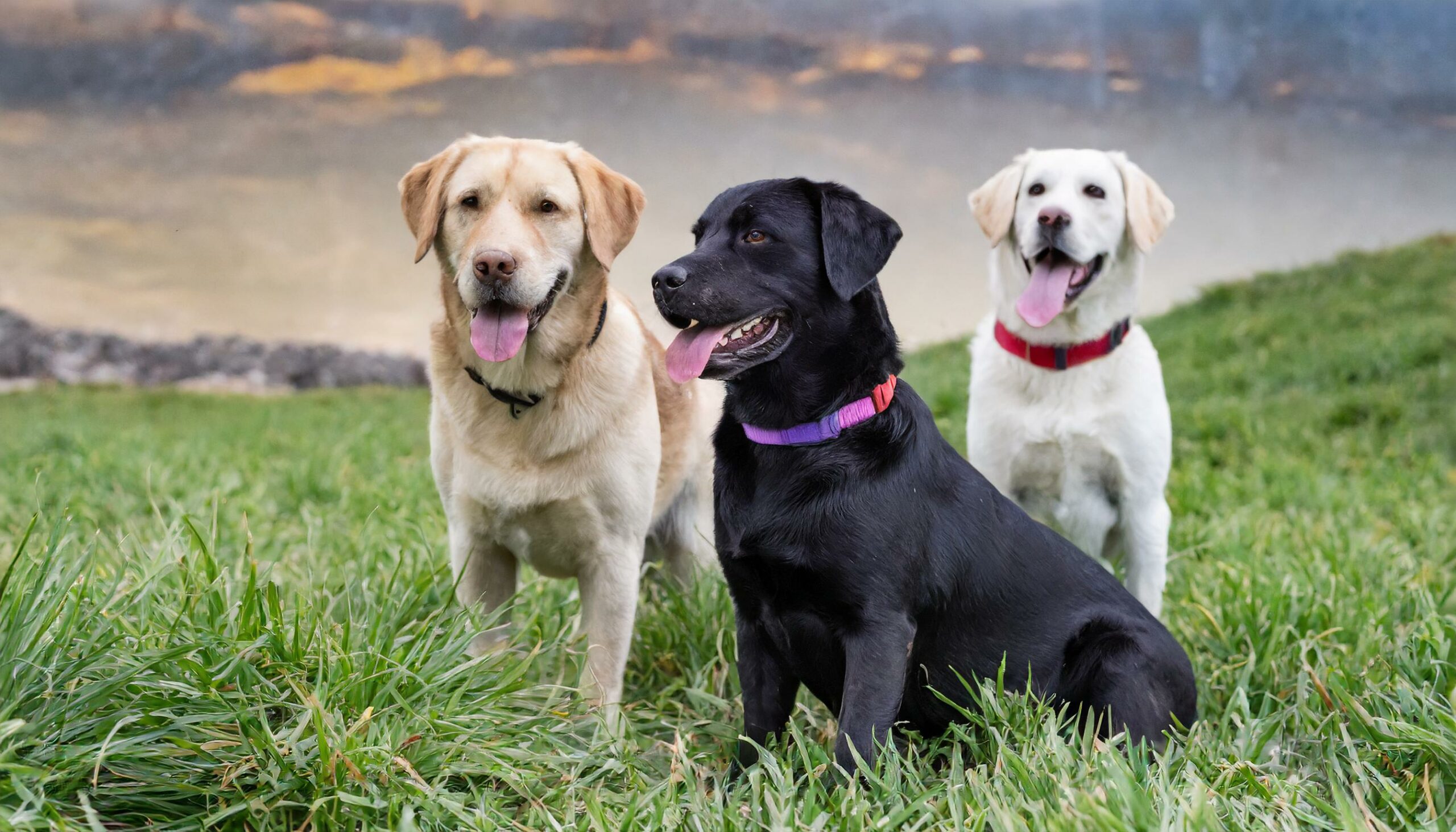Labrador Retrievers, affectionately known as “Labs,” hold a special place in the hearts of dog lovers around the world. Renowned for their friendly demeanor and adaptability, Labs consistently rank as one of the most popular dog breeds globally. This popularity often leads prospective dog owners to wonder about the differences between each Lab color: yellow, black, and chocolate. Specifically, many are curious about which color Lab tends to be the calmest, an important consideration for families and working environments. This article delves into whether a Lab’s color can influence its temperament and which color might be the most laid-back.
Understanding Labrador Temperament
Before exploring the influence of color on temperament, it’s crucial to understand the general personality traits common to all Labrador Retrievers. Labs are known for their intelligence, eagerness to please, and a friendly nature, making them excellent family pets and working dogs. They are generally outgoing, non-aggressive, and highly trainable, traits that have contributed to their widespread use in roles such as therapy and assistance dogs.
Factors Affecting Temperament
While breed characteristics provide a baseline, individual temperament can be influenced by a variety of factors, including genetics, training, and environment. The temperament of a Lab can also be shaped by the early socialization it receives, the training methods employed, and the general lifestyle of its owners. Therefore, while breed tendencies exist, individual differences should always be considered.
The Colors of Labradors
Labrador Retrievers come in three standard colors: yellow, black, and chocolate. Each color emerges from specific genetic configurations, which do not directly determine temperament but historically were associated with different roles in hunting and retrieval tasks.
Overview of Lab Color Genetics
The coat color of Labrador Retrievers is primarily determined by two genes. The first gene determines whether the coat will be black or brown, and the second influences whether the black or brown color will be expressed or whether the dog will be yellow. This genetic basis is important because it shows that color is a superficial trait, genetically speaking, and not directly linked to behavioral traits.
Which Color Lab is the Calmest?

When discussing which color Lab is the calmest, it’s important to note that individual temperament varies more within a color than between colors. However, perceptions about temperament by color persist, both among the general public and within the breeding community.
Analysis of Yellow Labs
Yellow Labs are often perceived as the calmest of the three colors. This perception might be influenced by their common use as service dogs, a role that requires calmness, patience, and a gentle disposition. Yellow Labs are frequently seen in therapeutic settings, helping individuals with disabilities or those in need of emotional support, which reinforces their reputation for calmness.
Analysis of Black Labs
Black Labs are often viewed as the most versatile Labs, adept at balancing work and play. They are highly valued as working dogs in various service roles and are also popular in competitive events and hunting. Their well-rounded nature often translates into a temperament that is both active and manageable.
Analysis of Chocolate Labs
Chocolate Labs sometimes carry a reputation for being more energetic and even headstrong. This could be partially due to less selective breeding practices, as the color was historically less favored than black or yellow. However, many chocolate Labs are just as calm and trainable as their yellow and black counterparts.
Expert Opinions
Veterinarians and professional breeders generally agree that while subtle differences in temperament can be observed between the different colors of Labs, these are not significant enough to be a sole deciding factor in choosing a pet. They emphasize that good breeding practices, early socialization, and consistent training are far more influential in determining a Lab’s temperament.
Case Studies and Research Findings
Research into canine temperament often focuses on the breed as a whole rather than on color variations. Studies typically underline the importance of the environment and upbringing over innate characteristics. Nonetheless, anecdotal evidence from breeders and longtime Lab owners sometimes highlights slight differences in activity level and temperament between the colors.
Owner Testimonials

Testimonials from Lab owners often reflect a wide range of experiences, even within the same color category. Some owners of yellow Labs rave about their pets’ gentle and calm demeanor, while others may report high energy levels and playful antics. These stories underline the variability of temperament within each color and suggest that choosing a Lab based on color alone might not lead to predictable outcomes.
Choosing the Right Lab for You
When selecting a Labrador Retriever, potential owners should consider more than just coat color. Factors such as the dog’s lineage, the breeder’s reputation, and the specific energy level and personality of the individual puppy are crucial. Prospective owners should meet the puppy’s parents when possible to observe their behavior, which can provide valuable insight into the puppy’s future temperament.
Training and Environment
The environment in which a Lab is raised plays a critical role in its development. A stable, loving home that provides consistent training, socialization, and mental stimulation will help any Lab, regardless of color, to develop a calm and balanced temperament. Training techniques that use positive reinforcement are especially effective with Labs, encouraging them to behave well through rewards and praise rather than punishment.
Conclusion
While yellow Labs are often perceived as the calmest, the reality is that a Lab’s temperament is influenced more by its upbringing, training, and individual personality than by its coat color. For those looking to add a Lab to their family, focusing on these aspects will be more rewarding and provide a clearer indication of the pet’s future behavior.
FAQs
Do all labs of the same color behave the same?
No, there is considerable individual variation among Labs of the same color, influenced by many factors beyond genetics.
How much does training influence a lab’s temperament?
Training plays a crucial role in shaping a Lab’s behavior and temperament, often more so than the dog’s color.
Are there other colors of labs beyond the basic three?
Occasionally, Labs may appear in other colors like silver or charcoal, but these are not recognized by all kennel clubs and may result from specific genetic variations.
What should potential owners do to ensure they choose a calm lab?
Potential owners should look for reputable breeders, seek to meet the puppy’s parents, and choose a puppy whose temperament fits their lifestyle.
Can a lab’s temperament change over time?
Potential owners should look for reputable breeders, seek to meet the puppy’s parents, and choose a puppy whose temperament fits their lifestyle.
